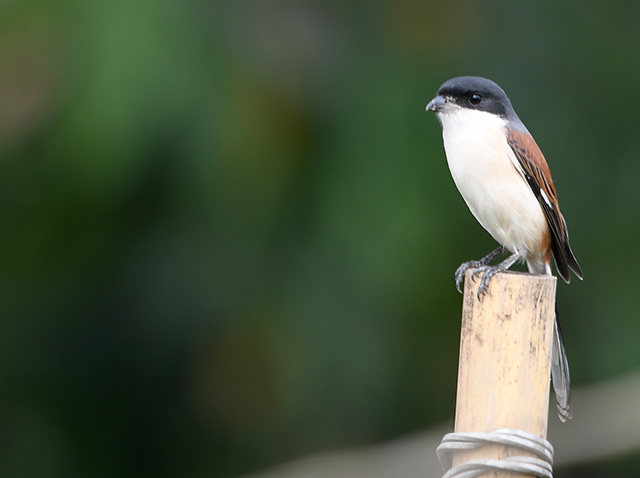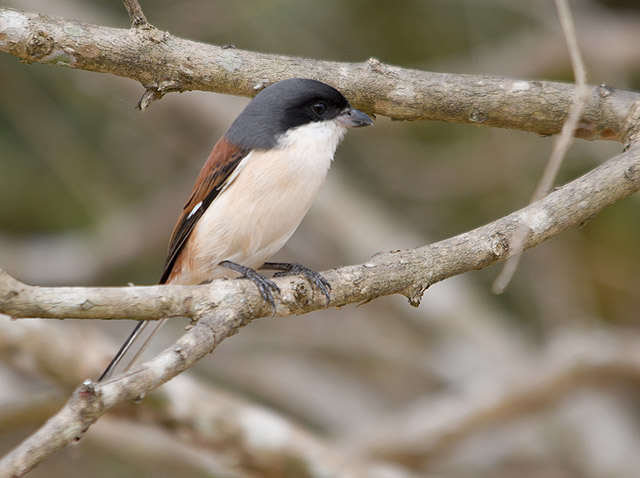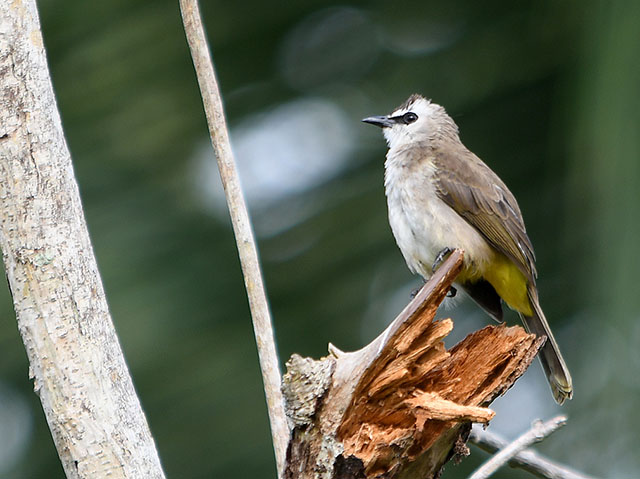It
has been more than two years since we last set foot on foreign soil and apart
from donning face masks, boarding an plane out of Malaysia is pretty much
the same as it used to be. A few hours later, we found ourselves in The Land of
Smiles and our vacation in northern Thailand began. This was not a birding trip
as I was with my better half and birds that I may encounter during our stay
here in Chiang Rai and Chiang Mai would be a bonus. This part of the country is
quite appealing and some of the views, spectacular. Needless to say, after what
everyone has gone through, this little getaway was much anticipated. It has
been a long time since I last saw that sparkle in her eyes and this trip certainly
brought that out again.
Inevitably,
I ended up shooting more typical images on this trip. But a short trip to the
highest mountain in Thailand was part of our itinerary and my hopes for some
decent birding lie with that highland retreat.
The
first birding encounter of the trip took place right outside our hotel along
one of the busiest parts of Chiang Rai town. A female White Wagtail was resting
on the porch roof. It is a scarce migrant back home and was enough for me to
tolerate all the stares of the locals as I tried my best to capture some images
of this lovely bird.
Eventually
I realized that the White Wagtail is relatively common here and a pair that I
came across at the compound of the Chiang Rai’s renowned White Temple was
exceptionally confiding as well. However, the pair was restless and time was a
luxury I do not possess on this trip as we were part of a tour group.
The
Great Myna is also common in northern Thailand but I did not put much effort
into capturing its images. This species is spreading down to Peninsular
Malaysia and I have had my share of encounters during excursions to Perlis
state.
The
Fah Lu Huang Garden at Doi Tung was another lush landscaped garden that we
visited. The colours and beauty of all the flowers we encountered was much to
my wife’s delight.
Me,
on the other hand, struggled to obtain memorable birding experiences here. In
the end, I had to settle with a couple of bulbuls. The Sooty-headed Bulbul does
not occur in Peninsular Malaysia and naturally, had my undivided attention.
Although
the Red-whiskered Bulbul is conspicuous with its vocal talents and wicked
crest, photographic opportunities did not come easily.
There
seems to be a preference to keep Mute Swans are ornamental birds here in
northern Thailand and no less than two tourist destinations that we visited had
these elegant water fowls as part of their attractions. I had a tough time
explaining to the rest of the group why I am not spending more time photographing
these domesticated swans...
The
agricultural landscape at Singha Park certainly has potential and between the
usual sightseeing activities, I managed to sneak off some for brief birding. On
one occasion, I was caught red-handed while pursuing a Pied Bushchat at a patch
of grassland.
My
gut feeling proved to be right when I enjoyed what should be the bird of the
trip. A stunning male Burmese Shrike was on the hunt and my lumbering intrusion
did not seem to ruffle any feathers at all.
He
was a creature of habit and returned to the same vantage point after each
foray. The only issue was I was restricted to photographing him from this angle
but it was undeniably a memorable experience.
Most
lizards tend to blend in with their surroundings but I do not think the same
can be said about the Blue Crested Lizard. Half the body, particularly the head
region, looked as though this reptile has been dipped into a bucket of bright
blue dye. I was transfixed on the lizard as it rested on a tree trunk and this
lifer of another nature turned out to be one of the highlights of the trip.
The
peak of Doi Inthanon is the highest point in Thailand and the 6°C temperature
that greeted us upon our arrival makes it one of the coldest as well. And the
views, should be up there among the best especially the alluring sea of clouds.
At
the summit, I was given some time to wander around on my own. As expected, this
locality was teeming with bird life and the time factor prevented me from truly
appreciating all species that were present. I did not do much homework prior to
the visit as not to raise too much expectations. However, I do know as a fact
the stunning Mrs. Gould’s Sunbird calls this place home. A few sunbirds
frolicking about a flowering tree had me sprinting down the access road until I
reached the base of the tree. True enough, there was at least 3 Mrs. Gould’s
Sunbirds present but the only one that finally made its way to my memory card
was an immature male.
The
Silver-eared Laughingthrush is a split from the Chestnut-crowned Laughingthrush
complex just like the Malayan Laughingthrush back home. This lifer provided the
best photographic opportunities for this highland excursion as the bird foraged
for food confidingly close to a throng of tourist including yours truly.
Harsh
lighting and the active nature of a flock of Chestnut-tailed Minlas prevented
me from including these adorable and striking birds into my photographic
highlights for this visit to Doi Inthanon.
The
distinct silhouette of a drongo resting on a tall tree persuaded me to put some
effort in identifying the species. After further scrutiny, it turned out to be
an Ashy Drongo. I am usually grateful for whatever I have been given but when I
am in another country, a species that I can regularly encounter back home will
not be able to evoke much emotions.
Northern
Thailand is an intriguing place and the birds there even more so. This trip
was nothing more than a teaser and if I have the chance, I would love to a have
another one purely for birding. Some of the best moments from this vacation had
nothing to do with birds. They were of my other passion in life which is making
memories with the love of my life. And getting sprayed by the powerful
Wachirathan Waterfall while getting our photo taken was certainly one such
moment.








.jpg)
.jpg)
.jpg)








































.jpg)
.jpg)
.jpg)
.jpg)











